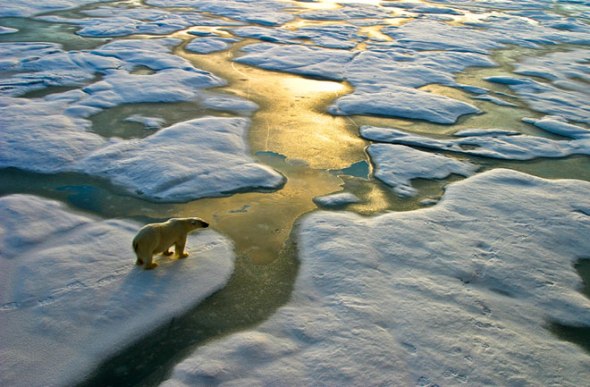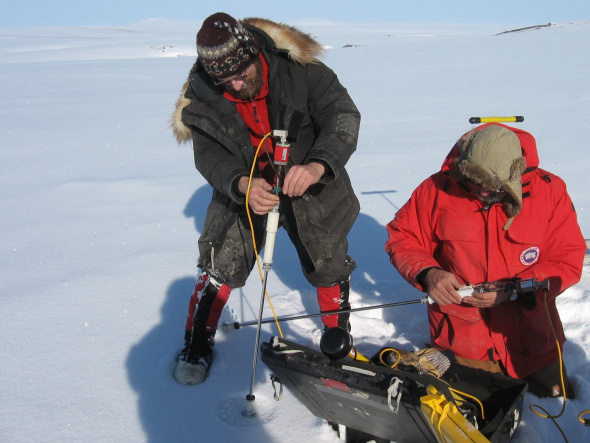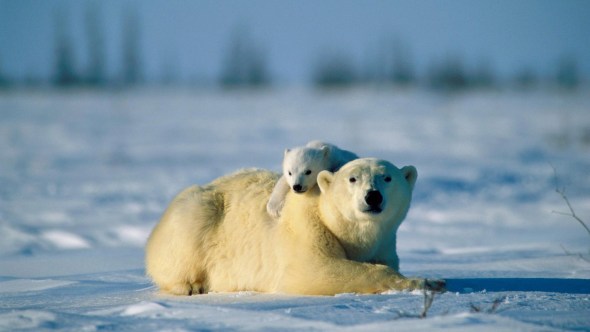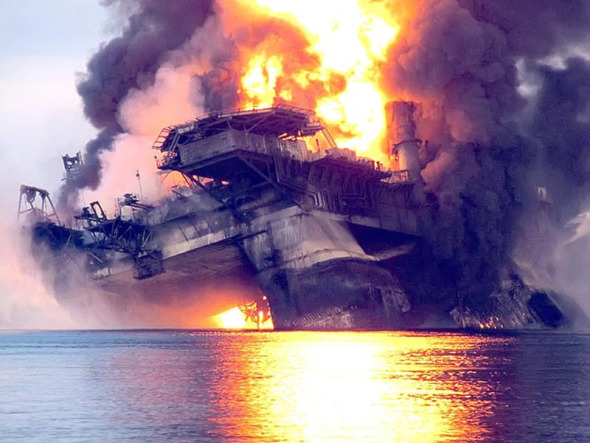Environmentlsism Chapter 43 - The Polar Bears Last Stand
The polar bear formally identified as the Ursus maritimus back in 1774 was last spoken on with regards to it’s current environmental state at the Conference of Parties (CoP16). Listed as vulnerable we hoped and prayed this magnificent bear that is living in a warped environment attacked by both man and “environmental climate change” would of at least been given some form of acknowledgement to preserve it’s environmental status that is currently listed as vulnerable on the International Union for the Conservation of Nature RED LIST (IUCN).
Regrettably for the Polar Bear this turned out to be negative and has now placed many populations of gentle snowy giants within danger from damaging environmental change, poaching, trophy hunting, to illegal pseudo hunting, pollution and more.
Currently we are fighting two factors here that concern the Polar Bear. Hunting/poaching and environmental change, these two factors are the main threat to the Polar Bear with human and species conflict third. Environmental change is what we believe although cannot prove led the Convention on International Trade in Endangered Species of Wild Flora and Fauna better known as the Washington Convention to no longer play any real part in conserving this ionic and well known species that has inhabited the Antarctic for hundreds of years.
Back in the 1970’s there was a moratorium on Polar Bear hunting that saw the numbers increase on an incredible scale, then with the numbers back on trace the ban was then formally lifted. We cannot though simply blame hunting and/or poaching for the now decreasing numbers of the Polar Bear (Ursus maritimus) and exactly how does one solve this gastronomically large environmental problem that is unfortunately pushing the Polar Bear form “extant” to (extinction).
Firstly lets look at some basic facts that need to be addressed that we “believe” the Convention on International Trade in Endangered Species of Wild Flora and Fauna (Washington Convention) may be not addressing simply because of the size and scale of the problem to re-homing an Antarctic Marine Polar Bear.
In total and led by Marine Biologists from the International Union for the Conservation of Nature (IUCN) there is a rough population to the nearest figure based on the last census 23,000 to 25,000 Polar Bears within the wild listed in nineteen units of “ sub-populations”.
Of those, the latest data from the IUCN Polar Bear Specialist Group show that 8 sub-populations are in decline and there is a high estimated risk of future decline due to climate change being the main player here.
Climate change and “species population preservation” is not as easy to undertake as one is led to believe within this region. On dry soiled land or within the oceans it can predominantly seem rather straight forward however the Polar Bear that is also a marine mammal and the third largest doesn’t just reside on normal static land. The furry white bear lives on a melting and moving ice pack that is being destroyed by human negligence that in reality is protected under the 1975 Antarctica Treaty. Regrettably environmental warming doesn’t fall within this area “as such”.

So in reality we and many other conservationists would of believed that the Convention on International Trade in Endangered Species of Wild Flora and Fauna would of acted with the International Union for the Conservation of Nature as well as all Cites signatories to conserve this species sooner rather than later.
Because of ongoing and potential loss of their sea ice habitat resulting from climate change, polar bears were listed as a threatened species in the U.S., across their range, under the Endangered Species Act in May 2008. However this is not ceasing their population decline and it’s estimated within the next eight to possibly twelve years or even less we will lose these magnificent bears for good.
Polar bears depend on sea ice as a platform from which to hunt seals, rest and breed. In the southern range of polar bears, the shorter sea ice season has decreased the amount of time bears can hunt for their prey. Sea ice break-up forces them to spend the summer without significant feeding, relying on their fat stores from the previous summer to survive.
Many polar bears now suffer from malnutrition and others face starvation, especially females with cubs. There have been many emotionally touching stories too of individuals viewing polar bears trapped on literally a small detached ice sheet over one hundred miles from their main native land from which they stay clutched to in the hope that small piece of ice will not melt thus killing them.
Traditional prey species may be less accessible in a new sea ice environment, and seals that use the ice are also predicted to fare poorly in a warming Arctic. Climate change is also resulting in more habitat fragmentation, creating more opportunities for oil and gas development and increased shipping which we MUST acknowledge now.
At this current moment International Animal Rescue Foundation and many more organisations of which one in particular Greenpeace International a well renowned peaceful environmental organisation orchestrated the activist movement on America’s plans to drill within the Arctic that would of caused more atmospheric warming, climate disruption and change as well as noise and marine pollution to loss of the Polar Bears prey from marine sonic seismic disruptions caused by drilling that’s been linked to many Whale, Dolphin, and fish deaths internationally before, regarding non-Arctic floating rig and inshore drilling platforms located globally.
In the Arctic, most industrial development has been on relatively small pieces of land. As summer sea ice retreats, a new ocean is emerging, which allows more opportunities for industrial development at sea and on larger parcels of land. At the same time, the retreating ice is resulting in more polar bears spending longer periods on land for denning. These factors combined are putting polar bears and industrial activities on a potential collision course.
Offshore petroleum installations and operations in the Arctic are expected to increase in number. This would likely affect polar bears and their habitat in many ways including:
- contact with spilled oil would be fatal
- an oil spill would affect the entire food chain
- noise generated from onshore and offshore oil operations would cause disturbance Increased Arctic shipping represents a risk to polar bears. As traffic by barges, oil tankers and cargo ships in Arctic waters increases, so do the risk of oil spills and human disturbance to polar bears.
For the present time, drilling for oil in Antarctica has been suspended however not halted which is concerning us greatly. We have seen many disasters within the last two decades involving rig explosions and leaks of which the largest so far to date was the BP explosion. In April 2010, the Deep water Horizon explosion in the Gulf of Mexico killed 11 people and resulted in 4.9 million barrels of oil being discharged, that threatened marine life and hundreds of miles of coastline. that caused massive loss of maritime life, polluted thousands of miles of shorelines and reef beds, affected tourism and trade, and is still damaging the oceans to date.
Picture below details the catastrophic environmental damage a simple mistake could make from drilling within the Arctic ocean thus killing of hundreds of land and marine animals and potentially seeing the Polar Bear banished.
The damage that oil spills cause to land and marine life is completely catastrophic, and although this “suspended” operation is in what the government states as “a safe to drill area” it technically is not safe at all when we have seen history repeating itself many time’s resulting in a combined discharge of a trillion barrels of oil spewed into the oceans that doesn’t just vanish after clean up operations begin and conclude. The oil sadly sit’s within the silt beds and sea floor to intoxicating many marine shelled species.
2010 we saw the Deep sea Horizon spew hundreds of barrels of oil into the ocean, then 1979 Ixtoc 1 saw 2.3 million barrels of oil released from it’s well.
Nowruz field well back in 1983 saw over 2 million barrels of oil pumped into the Gulf. The Castillio de Bellver saw the South African coast line tragically ruined in 1983 destroying masses of maritime land and oceans rendering many businesses that rely on marine tourism finically ruined and left uncompensated.
Amoco Cadiz Tanker released in 1978 a total sludge of 1.4 million barrels of oil with the Odyssey Tanker in 1988 spewing a smaller 1 million barrels into the highly sensitive Canadian oceans killing hundreds of marine mammals and non-mammalians.
Furthering this Atlantic Empress Tanker released over 1.1 million barrels of oil into the oceans within Trinidad and Tobago, then the Torrey Canyon Tanker released into the British oceans just over 1.2 million barrels back in 1967.
The largest shipping oil disaster was indeed Exxon Valdez that spilled a gastronomically vast deluge of 3 million barrels of oil within our sensitive American oceans back in 1989. So we all have a right to worry when history has repeated itself many times and should it happen again which it will, it would not just result in the Polar Bear being wiped out but hundreds of other species of flora and fauna to sensitive areas of environmental scientific importance that we must rely on to “decrease” the impending environmental destruction that is ongoing yearly.
For the past one hundred years and even right up to only this January 2013 Antarctica has been the subject of many maritime scientific excursions of which holds locked deep within the ice mile down structured ice layers many fascinating facts of how the last ice age began and ended, important scientific data that has been collected that shows to scientists the “structure of human and animal life to evolution” to (climate change patterns) and how one can predict weather changes to future environmental patterns.
So should an oil spill occur we will not just be viewing our Polar Bear to Arctic Fox, Gulls, Arctic Hare, Seals Whales and Dolphins, and many more species of fish and mammals to invertebrates and botanical species destroyed, the potential for damaging “unknown much needed” scientific data on how we can preserve the environment will be wiped out and/or damaged for centuries if not for ever.

A clean up operation within this area that see’s temperatures drop to a staggering -70 would be totally out of the question as of the harsh Antarctica storms, and marine changes.
Many Arctic areas have strong polar bear management and monitoring plans. But there are a few places where unsustainable hunting appears to be happening, including unreported and illegal hunting, and hunting in areas where the sub-population status—stable or declining—is uncertain.
Although the Polar Bear is listed as vulnerable and are in so many ways being protected we are losing many through poaching, of which some poaching incidents are being linked again to the Traditional Chinese Medicine culture.
The Indigenous Inuit Tribes of Antarctica that reside and have lived within the Arctic hemisphere are also poaching/illegally hunting the bears as their own natural food supplies that are usually large fish, whales, fox to seals are being depleted to moved on due to the vast changes regarding climate warming. A Polar Bear fur coat can fetch some $10,000 USD (United States Dollars) that also feeds the local people too for some months.
Polar bears are at the top of the food chain and have an important role in the overall health of the marine environment. Over thousands of years, polar bears have also been an important part of the cultures and economies of Arctic peoples. Polar bears depend on sea ice for their existence and are directly impacted by climate change—serving as important indicator species.
The Convention on International Trade in Endangered Species of Wild Flora and Fauna we believe did not act on many experts opinions and scientific analysis to now list the Polar Bear as endangered thus placing an immediate moratorium on hunting due to “climate effects and changes” thus not being able to handle or even know how to decrease climate change tackling it head on.
Does Cites know what we know? Or are they still yet unaware how they are going to control climate change that is the main destructive factor here killing the species off. You see as explained the ice caps are melting. So the more they melt the more the Polar Bear has to hunt for longer periods off time at longer distances/ranges “hence why some have appeared malnourished” as their own prey is also looking further a field for food to survive. This simply cannot go on.
The Polar Bear is a marine animal however it’s not a marine swimmer in same ways as Seals and Whales, they cannot continuously swim in search of food. So this leaves the Polar Bear at a stale mate. Die of starvation or go inland.
They are like any living species on earth, they will not simply give up so thus taking great risks to move inland or swim for miles in search of land from which some will make it ashore or they will swim continually, exhausting themselves to the point they most regrettably drown and this is what has angered International Animal Rescue Foundation This is NOW why we need to act and must NOT fail this bear WE need YOU to act NOW to preserve this species and demand that the Convention on International Trade in Endangered Species of Wild Flora and Fauna, the United Nations Environmental Programme, and the International Union for the Conservation of Nature are now lobbied and pressured on a massive scale never seen before or we will lose all 25,000 left within the Antarctica wild.
The main problems we see here is that preserving the decreasing population of Polar Bear is going to be more difficult than one is led to believe as of the melting ice caps. Should the ice fields completely melt down which is going to take some years to the point where translocation of the species of Polar Bear is needed then where on earth is one to place the remaining estimated 25,000 species?
Translocating a Rhinoceros or even an Elephant is relatively straight forward as we have miles of still unpopulated dry land, however we cannot just move an entire population of [marine] Polar Bear as of their dietary needs and the remaining ice fields melting.
To even undertake such a task would be monumentally mammoth in proportion. We cannot simply place them within Zoological Gardens neither as some environmentalists have stated and even put forward to the Convention on International Trade in Endangered Species of Wild Flora and Fauna (Cites).
The Polar bear is also facing human and species conflict of which when roaming onto land in search of food the Inuit indigenous people to locals shoot the animal dead. Scientists believe that a natural “safety net” of ice in the High Arctic of Canada and Greenland, ice covering 500,000 square miles, or twice the size of Texas, may persist longer than the ice anywhere else. Work has since the 1990’s already began to preserve this region ready for such translocation, however we are talking about many individual Polar Bear’s here in an area the size of Texas that stands at 268,820 sq miles and if it works what’s to say that this area with regards to the ever increasing environmental warming is not going to be damaged too leading us back to square one.
The Polar Bear at this moment is at threat from
- Environmental change and climate warming.
- Human and Polar Bear conflict
- Illegal poaching and non-sustainable hunting
Should we fail on all three of these most important issues then we will lose the Polar Bear. I have included some videos below for your attention and shall update on the Polar Bear and environmental destruction in due course.
Thank you for reading
International Animal Rescue Foundation
Info@international-animalrescue-foundation.org.uk
All rights reserved - The name[s] of International Animal Rescue Foundation belong to and are registered under the DMCA Act 2008 - No unauthorised copying, or copyright of both Speak Up for the Voiceless and International Animal Rescue Foundation’s named is authorised without the strict consent from the Board of Directors. Contacts for the board are listed within America Sacramento and France. Please email for further information.
Please share to make aware the plight of our Polar Bear before it’s to late. We haven’t time to fail or lose, we MUST fight for their future.
WE MUST NOT FAIL THE POLAR BEAR AND NOW IS THE TIME TO PRESERVE THEM, THEY IS NO IF’S OR BUT’S (CITES) ARE WRONG ON THEIR JUDGEMENT IN MARCH 2013 AND NOW WE MUST LOBBY THEM TO FORCE CHANGE. WE HAVEN’T MUCH TIME LEFT …. ENVIRONMENTAL CLIMATE CHANGE IS KILLING THIS SPECIES OFF.
THANK YOU FOR READING AND VIEWING THE VIDEO’S.






Thank you for your reply, should it merit a response we will respond in due course. This site is owned by International Animal Rescue Foundation and moderation is used.